 Do you struggle with Half Moon Sidebend? Are you deep, but not sure if you're doing it correctly? Or do you struggle to bend your spine sideways at all? We have a solution: do Side Plank. Here is why... External Obliques & Side Plank Side Plank is a posture that engages the sides of the abdomen. These muscles are named the external obliques. If we are balancing on our left arm, the left external oblique will be engaged. On the right arm, it's the opposite. The external obliques are muscles that connect from lower ribs on the sides of the body, to the top of the pelvis or iliac crest. Essentially, this muscle pulls the ribs down toward the pelvis on the sides of the body. When it is engaged, our spine bends sideways. This is exactly the movement of Half Moon Sidebend. You may notice that in Side Plank, the spine is "straight". But in the case of Side Plank, the external oblique are what prevent our ribs on the side of the body from moving away from our pelvis. Without this engagement, our side body would "dip" or "hang" down toward the floor. And if we were to engage this muscle more in Side Plank, we would in fact start to bend to the side, essentially doing Half Moon while arm balancing.  Half Moon Sidebend Many of us struggle to effectively engage this muscle in Half Moon Sidebend. The reason is that we place too much focus on the arms, or rely on gravity to pull us over to the side. Neither of these approaches will help, and they will only draw us further from the engagement we want to bend the spine to the side. Try practicing Side Plank before you do Half Moon Sidebend. See if you can focus on the side of your abdomen and gain awareness of this muscle. Then stand up and do Half Moon Sidebend. Notice the strength and engagement required to functionally bend your spine to the side. It feels like pulling your right or left ribs down toward your pelvis while relaxing the opposite side of your abdomen. Half Moon Sidebend is not a passive movement. Find the awareness in your abdomen and notice how both your strength and depth will improve. Happy practicing!
2 Comments
Thanks to Prabha Khaitan Foundation, Glenburn Penthouse and My Kolkata for hosting the book launch of Strong Woman Reba Rakshit. The full event was covered here: https://www.telegraphindia.com/my-kolkata/people/reba-rakshit-was-a-star-yet-history-forgot-about-her-ida-jo-pajunen/cid/1997409 Enjoy!  Peary Charan Girls School - Kolkata Peary Charan Girls School - Kolkata We recently took the new book Strong Woman Reba Rakshit to places and people connected with Reba's life in North Kolkata. Of course, we brought a copy of the book to Ghosh's College! This is where Reba learned yoga and practiced for much of her career. In 2023, Ghosh's College celebrated 100 years! What an iconic piece of North Kolkata's history. We also traveled to Peary Charan Girls' School, which is just down the road from Ghosh's College. This was where Reba studied as a young girl. It is one of the oldest schools for girls in India, and still in operation today. It is also thanks to the current Principal of Peary Charan, for finding the old school records of Reba and her sister in the registrar. We were excited to learn that the school has now named one of the groups of students after Reba! We gave a few extra copies of the book to be stored in the school library. We also visited Das Gupta booksellers, a personal favorite shop. Over the years, this bookstore has helped us tremendously by finding books for research or pointing us in the right direction. We are ever grateful for the human connections and had a blast bringing Reba's story (at least in book form) back to her home.  84 Yoga Asanas by Gouri Shankar Mukerji, pg 72 84 Yoga Asanas by Gouri Shankar Mukerji, pg 72 This asana is the same in shape as what many people call Spider. However, this posture is more accurately named as Crocodile because "Makara" means crocodile. The posture is named after Makar, the mythological sea-creature ridden by Ganga Ma, the goddess of the Ganges River. On the list of what is known as "the 84", the name has been written incorrectly in English. The reason for this is mistranslation but it brings up the difficulty of transliteration. So, what is transliteration?! TRANSLITERATION Transliteration refers to the process of translating from one alphabet to another. In English, we use the symbols you are reading now. But in another alphabet, a totally different set of symbols is used. Sanskrit, the language asanas are most often written in, uses Devanagari. Because these symbols are unrecognizable to a non-Devanagari reader, a process of transliteration takes place. This means that we approximate the sounds of one alphabet using the characters of another alphabet. Let's take the simple example of Corpse Pose. In English this is written as Shavasana or śavāsana. However in Devanagari this would be written as शवासन. In another language and script, Bangla for example, it would be written as শবাসন. While the symbols look different script to script, the words are essentially the same. This brings us to the asana pictured above. What is it called? SPIDER & CROCODILE If the asana were to be "Spider Pose" it would have to named as Markaka. However, the posture is named मकर which is Makara, or Crocodile. The posture is therefore written as मकरासन, or Makarasana. This name also has historical significance in the Ghosh lineage. For example, Gouri Shankar Mukerji names it as Crocodile in his 1962 manual. On the list of 84, the transliteration is written correctly as Makarasana. However, the English is then written as Spider. This is incorrect. It's a very understandable mistake as the words are similar and even more importantly, very few people (including us!!) understand Sanskrit to a deep degree. It also begs the question, does it matter? We are of the opinion that names are only valuable if they communicate information clearly. If someone understands what you mean, it does not matter what words you use. However, it is also useful to be accurate. If we are simply mistaken in our knowledge, we can correct this and be more precise. It's not useful to repeat something that is incorrect. It is pretty clear that this posture should be named Crocodile. Source for Images: https://www.learnsanskrit.cc/
The List of 84 Asanas, via Bikram Choudhury, Esak Garcia, Tony Sanchez and many others... Mukerji, GS. 84 Yoga Asanas. 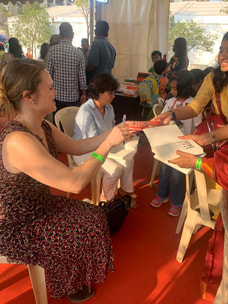 Here are a few images from DAV Festival Mumbai! DAV United Festival is a two-day spectacle, which invites students, teachers, parents and alumni from schools, colleges, universities, and communities in Navi Mumbai for a fusion of arts and entertainment. Ida promoted Strong Woman Reba Rakshit by discussing spirituality for youth, alongside author Manisha Melwani. A highlight was leading the audience through a few rounds of Even Count breathing! What better for managing anxiety and calming the mind?! We would like to thank all the teachers at the event and the fantastic organizers. They hosted us so warmly and made us feel so welcome. We hope to visit again! Here are a few photos from press events for Strong Woman Reba Rakshit!
We had a great time in Delhi, exploring book shops and cafes. Alongside book signings, Ida recorded several interviews about the themes in the book and the process of research and writing. Stay tuned for these. The book has also been in the press! Read the clips here: Telegraph India: https://www.telegraphindia.com/my-kolkata/lifestyle/of-courage-and-conviction-lifes-a-circus-for-her/cid/1993918 Scroll.In: https://scroll.in/article/1061792/the-true-story-of-a-circus-beauty-queen-who-lifted-an-elephant-on-her-chest The book will be available from Ghosh Yoga within the week. Details to come...  Ida with Shantanu Chaudhuri - Editor In Chief, Om Books Ida with Shantanu Chaudhuri - Editor In Chief, Om Books We have just arrived in India to promote the new book Strong Woman Reba Rakshit! For those of you new to this project, it has been the works since 2018. Today, finally, we saw the book for the first time! Who is this story about? You may have not yet heard her name, but Reba was a star in her time. She was a circus performer, stunt woman, yogi, and disciple of Bishnu Charan Ghosh. As a professional woman in the 1940-1950s, she faced a lot of hardships in order to stand center stage and entertain audiences across India. However, Bishnu Ghosh and circus companies such as MV Shankaran's legendary Bombay Circus, realized that she was the star people flocked to see. She was able to lift an elephant on her chest through yogic breath control and concentration. Without her, the show was not the same. She was one of the first prominent female yogis in India, and a true star of the Ghosh lineage. This is the first biography written about her life. After so many years of holding this project close, I am excited for it to be out in the world. It is currently available only in India, but will be available in more countries soon. There are many book events coming up. In the next few weeks we'll be in Delhi, then in Mumbai and Kolkata. If you're interested, you can stay tuned at www.strongwomanreba.com, on Ghosh Yoga social media and here for future blogs. I absolutely love to read. A book is a window into another time and place, another person's mind, another way of seeing and thinking. Books teach me what it can mean to be human, but also what it might be like to be a robot or a microbe. Looking back, for me this was a year about truth, or rather the idea of truth: What I think is right, what I want to think is right, where that view comes from and why it may be flawed. Books that made it onto the list include ones about bullshit, the history of truth, the human obsession with our own meaning, and how our identity changes depending on the situation. Here are nine books I read this year that changed the way I think. On Bullshit by Harry G. Frankfurt Let's start with this little philosophical essay. The title is funny, and it seems like this book is going to be a gag, some clever insights about what it is to talk 'bullshit.' But this essay is something else entirely: A serious philosophical inquiry into the nature of bullshit. What is it? How does it differ from lying or ignorance or nonsense? Frankfurt concludes that a bullshiter simply has no regard for the truth. He does not care if he is right, wrong, true or false. He is only interested in getting a desired reaction at that moment. Bullshit "is grounded neither in a belief that it is true nor, as a lie must be, in a belief that it is not true. It is just this lack of connection to a concern with truth — this indifference to how things really are" that is the essence of bullshit. This revelation is shocking: a liar has regard for the truth. He just decides to state something that he knows is untrue, called a lie. But a bullshitter doesn't relate his statements to the truth at all. Classical Indian Philosophy by Peter Adamson & Jonardon Ganeri I am always on the lookout for clear explanations of history and philosophy, two topics which are infinitely complex and can easily devolve into self-referential terminology and nonsense. So I was pleasantly surprised to find this volume about Classical Indian Philosophy which is a well-balanced combination of deep and accessible. It begins with the Veda and Upanishads, effortlessly explaining the salient overarching points of these vast and layered eras. It glides through the big philosophical movements in Indian thought, including theism, non-violence, yoga and Buddhism. My favorite part of the book was the middle section, which digs into the philosophical developments of the middle-era Buddhists and Jains. These groups were highly philosophical, and I haven't seen such a lucid overview in any other volume. For example, there is a short chapter explaining Nagarjuna's "Tetralemma", a four-pronged logical negation that is usually off-putting in its detail. The explanation here is illuminating, including this passage about the dual possibilities of the phrase, "Don't slaughter a goat." It "might mean that you should slaughter a non-goat. Here the noun ('goat') is negated: you should indeed slaughter something, perhaps a cow or chicken, just not a goat. Or the verb ('slaughter') might be negated: the instruction would tell you to refrain from any sacrificial act at all." This book's short chapters and vast overarching scope make it a good reference to dive into according to your interest. Demon Copperhead by Barbara Kingsolver This novel needs no promotion since it has won prestigious awards and been a bestseller. I finally picked it up, and the first sentence assured me that I was in the hands of a master. The story is of a boy in Appalachia, his exploits and struggles. The basis of the story owes a lot to David Copperfield, but the first person voice of the narrative is gripping from the first word to the last. The Horrors and Absurdities of Religion by Arthur Schopenhauer This year I have often come across the work of Schopenhauer, a European philosopher who was greatly influenced by the Upanishads and Buddhism, and in turn affected modern yogis like Yogananda. So when I stumbled across this little book in a bookstore I had to read it. The title is certainly provocative, but he won me over pretty quickly on the first page with this statement: “What I respect is truth, therefore I can’t respect what opposes truth. Just as the jurist’s motto is…Let Justice be done though the world perish, so my motto is…Let truth prosper though the world perish.” What follows is a strong critique of religion which bears all the hallmarks of 19th century enlightenment thought and orientalism. Some of his arguments require a grain of salt, but what philosopher doesn’t? Schopenhauer does put his finger on one element with remarkable clarity: man’s need for greater meaning, what he calls the ‘metaphysical need.’ “Man is an animal metaphysicum, that is, his metaphysical need is more urgent than any other; he thus conceives life above all according to its metaphysical meaning and wants to see everything in light of that.” All in all, a challenging and thought provoking read. The Physiology of Yoga by Andrew McGonigle and Matthew Huy Most of the time I am torn between the opinion that there are more than enough books about yoga anatomy — perhaps too many — and the opposite view that we could really use some new ones with clear sources and explanations. This book, which is new this year, is a brilliant addition to the field. What makes this book special is its combination of citing scientific evidence and awareness of traditions and rumors in the yoga world. My favorite parts of this volume are the "Myth or Fact" inserts that address common beliefs among yoga teachers and students: that Headstand brings more blood to the brain; that Shoulderstand stimulates the thyroid gland; that twists detoxify the organs. The authors discuss any studies that have been done on the topic and what conclusions we can draw. Often there are no studies, so we are left to rely upon our other knowledge of anatomical and physiological function. McGonigle and Huy excel here, where they illuminate the amount of speculation as well as point us to more probable scientific explanations. Truth by Felipe Fernandez-Armesto A book about the history of truth?! This must have been written just for me! There are few things I love more than history and explorations of complex ideas. But this book is not exactly what I expected. I imagined a sort of explanation of how truth came to be so important and how it developed its signature qualities. But this is much, much more, digging into different conceptions of truth through time and culture. Fernandez-Armesto breaks the types of truth into four groups. Who would have thought there may be four kinds of truth?! Throughout the volume, I came to realize that the conception of truth itself is not terribly specific; that it depends on what we think it is. I suppose that shouldn't be surprising — I went into the book with one simple idea and came out with a far more complex view. The Sarva Darsana Samgraha by Madhava Acharya This volume is more specific to my interest in the history of yoga and philosophy. The best-known system of Indian philosophical systems has 6 members, the six orthodox darshanas. But there are many other ways of thinking, and even well-developed and influential systems that are not included on this list. This book, the Sarva-Darsana-Samgraha or Compendium of All the Systems, lists and explains 16 different spiritual-philosophical viewpoints. It contains all the familiar orthodox systems, like Samkhya and Yoga. But it also includes Buddhism, Jainism and strict materialism, among many others. Each chapter digs into some granular details of perception, knowledge and being. This is a book for those rare individuals who are interested in the somewhat arcane study of Indian philosophical history, as well as those who can tolerate minute philosophical debate and old uses of language. A difficult book to read and comprehend, but an eye-opener one for me this year. Selfless by Brian Lowery I stumbled across this book while wandering through a bookstore. Its title is compelling and in direct conversation with Vedantic and yogic concepts of an eternal, unchanging Self. The thesis here is that we have no single self, that our identity is constructed according to our surroundings: "Your self is constructed and reconstructed in a swirl of ever-evolving relationships." These relationships include family, work, politics, nation, and an infinite number of variations. There is a reason that I act differently around a three year old than a 50 year old; I act differently around my significant other than my boss. Selfless argues that we are actually a different person in each situation, because part of what defines us is who we are around, and what we are trying to accomplish. This book also explores the ideas of history, tradition and community. Often we adopt certain "selves" to create connection and continuity to the past or groups of people we admire. For me, it shone a lot of light on why we defend our identities and communities when they are destabilized. This book was one of my favorites of the year. Straw Dogs by John Gray
This was my favorite book of the year, and one of the best books I've ever read. It combines mind-blowing ideas with a sharp reading of history, religion and science, and it is incredibly readable. The pages fly by. On nearly every page I was gobsmacked by some revelation, some shocking idea that was as bold as it was clear. There is the idea that 'truth' is not something that serves humanity's evolution; there is no evolutionary advantage to knowing the truth. (This is of course interesting to compare to the book Truth above, and clearly something that was on my mind this year.) Gray writes, "Modern humanism is the faith that through science humankind can know the truth — and so be free. But if Darwin's theory of natural selection is true this is impossible. The human mind serves evolutionary success, not truth. To think otherwise is to resurrect the pre-Darwinian error that humans are different from other animals." Here you see the way that Gray's book dismantles ideas of scientific humanism, even arguing that the science and logic we revere only serves to undermine our vision of ourselves as a special, chosen species. The volume is full of challenging ideas like this, unafraid of poking holes in even the most sacred of concepts. I admire its clear-eyed audacity, like the boy who shouts that "the emperor has no clothes!" Reba’s is no ordinary story because she was no ordinary woman. Had the act continued, the weight of the elephant would have pressed Reba’s body down onto the knife loosely stitched into the mattress placed below her and killed her ...
As little Reba explored the wilderness with the rising sun lighting up her face, she knew she would chart her own path of endless adventures and daring feats someday. A few years later, the rapidly evolving society of early twentieth-century Calcutta, her adopted home, provided just the right launch pad for her dreams. She found a guru in the legendary Bishnu Charan Ghosh.With her Bishtuda by her side and the stage to perform her death-defying stunts, Reba reached dizzying heights with practice, precision and perseverance. Her petite frame belied the strength of her conviction and the power of her intent. Strong Woman Reba Rakshit is a captivating account of a daredevil who courted controversies and movie stars with equal ease. A woman who dared to dream and had immense courage, steely determination and enough ambition to fulfil it. The stuntmaster who worked shoulder to shoulder with men to give her country its first ‘strong woman’. She was the first Indian woman to lift an elephant on her chest. But the ‘Circus Beauty Queen’ was wearing a crown of thorns until one day she decided to take matters into her own hands ... Reba’s is no ordinary story because she was no ordinary woman. Ida Jo Pajunen’s well-researched narrative brings to life not only the legend, but also the sights and sounds of Kolkata of a bygone era. Available now in India, worldwide coming soon. I spent most of my year writing a Master's dissertation and engaging with post-colonial and gender theories. I find that times of intense study and academic reading are usually paired with a big swing in the other direction: engaging fiction. So, that is where my list lands. It is a mixture of academic theory and fiction. The fiction I recommend (and one non-academic but non-fiction) all have incredible characters that are lovable, yet at times very complex. I love books that take on what it means to be present in the world and are completely believable, yet still awaken us to the depths of what it means to be human. With that, I'll start with what was easily my best read of the year, Demon Copperhead by Barbara Kingsolver.  Run, do not walk, to get this book if you haven't already. It is an utter masterpiece. In the days after finishing the book, I found myself really missing the main character, Demon. I won't go through the synopsis because so many have been talking about it. But the way in which it presents something that is demonized, judged and "wrong" in America right now while presenting it as so average and understandable is truly excellent. It is so good. A must read. 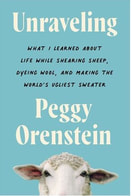 Next are two books about creativity and the first non-fiction in this list. I loved Unraveling by Peggy Orenstein. It was tender, funny and still packed with information. The author sets out to make a sweater from start to finish. As in, shearing a sheep, growing the plants to dye the wool, designing a sweater, etc. The moments when she talks about her dad are so heartfelt and moving. I listened to this book on Audible and really enjoyed that.  Then there is The Creative Act: A Way of Being by Rick Rubin. This is SO GOOD. I loved every moment. It's written in very short vignettes. It's all about being in the world and the act of creating. In some ways, it overlaps with yoga. It is about what we think that prevents us from doing or being. These books mark the end of what I'll call the "non-theory" section of my list. The Creative Act is a nice bridge as it does present theory on creativity but asks the theory to be non-intellectual. The next batch of texts are information focused, and draw upon the production of theory and the analysis of culture, history and behavior. 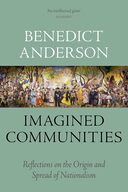 First up is Imagined Communities by Benedict Anderson. This was very readable and so interesting. It tackles the idea of "nation" and how this is an imagined community. A nation means that we feel connected to people we will never meet. We feel as though we have a shared identity, yet we will never know many of the people we feel connected to. Anderson writes about how this is possible. What makes us feel a part of an imagined community? This is a great (and accessible) read and incredibly relevant in the days of rising nationalist movements worldwide.  The next two are works in post-colonial, gender theory. By that I mean, engaging with how power dynamics (in the form of colonialism, racism....) affect how we conceive of gender and the role gender plays in society. Oyewumi's work The Invention of Women looks at how gender is not always a way in which society is organized. The division between man and woman, and the inherent power dynamic that is almost always within that division is not a "norm" but rather a constructed relationship. 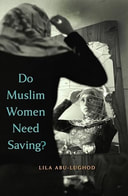 Lila Abu-Lughod's book Do Muslim Women Need Saving? is an important look into the role "women" play in political mobilization and war. Very often women and children are used to justify political action, but is this right? She asks difficult and important questions about how we perceive "others" across national and religious boundaries. This is not always a comfortable read but the questions she asks are important. Lastly, I'll end with a book about yoga! This year I revisited Joseph Alter's Yoga in Modern India. This is a great book. The themes that Alter draws out in twentieth century yoga are fascinating and illuminating. I love Alter's work and also read Gandhi's Body this year. I had read Yoga in Modern India before, but found it great to revisit as there is a lot there. I highly recommend any yoga practitioner read anything by Joseph Alter. It will help put into context the practices of today's yoga. Let us know what you read this year! What did you love? What did you find fascinating? We'd love to hear what spoke to you and what you recommend. |
AUTHORSScott & Ida are Yoga Acharyas (Masters of Yoga). They are scholars as well as practitioners of yogic postures, breath control and meditation. They are the head teachers of Ghosh Yoga.
POPULAR- The 113 Postures of Ghosh Yoga
- Make the Hamstrings Strong, Not Long - Understanding Chair Posture - Lock the Knee History - It Doesn't Matter If Your Head Is On Your Knee - Bow Pose (Dhanurasana) - 5 Reasons To Backbend - Origins of Standing Bow - The Traditional Yoga In Bikram's Class - What About the Women?! - Through Bishnu's Eyes - Why Teaching Is Not a Personal Practice Categories
All
Archives
May 2024
|
























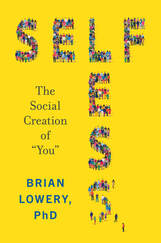



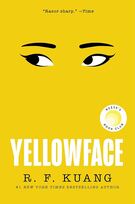
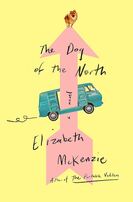






 RSS Feed
RSS Feed